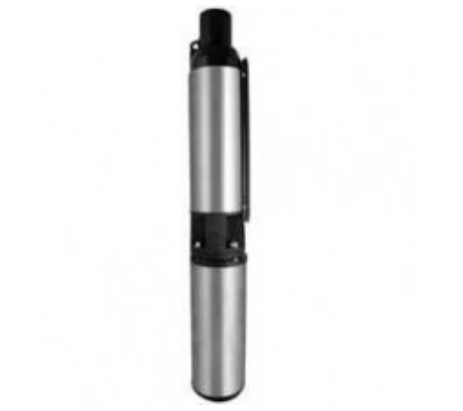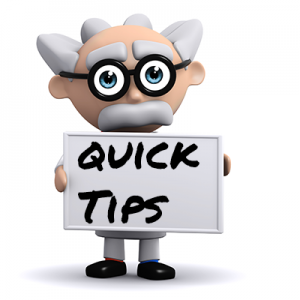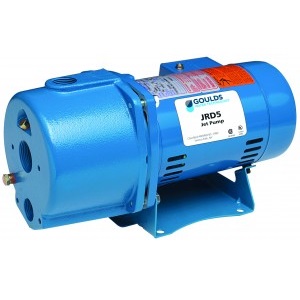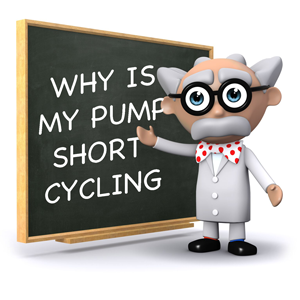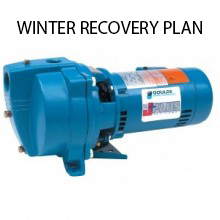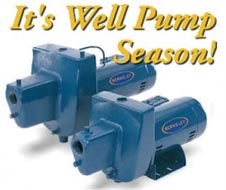-
Zoeller Potable Water Turbine Pumps Buyers Guide & Review
April 22, 2019Zoeller's submersible, potable water turbine pumps are rated by the number of gallons per minute to the well head from various water level depths. Models rated at 7 GPM (26.5 LPM) are for small homes, cottages, and light water usage demands, whereas the 11 GPM models are for the average residential size home and family. 1/2 thru 1 HP F&W motors used on Zoeller submersible pumps are designed to meet NEMA standards. 1/2 HP models are available in either 115 or 230 volt. The 3/4 and 1 HP models are available in 230 volt only. All models are available with either a 2 or 3 wire connection plus ground wire. 3 wire models require a control box. Features Stainless steel pump shell, motor shell, and drive shaft Quiet and economical operation No priming required Submersible pumps rated by the number of gallons per minute to the well head from various water level depths. Models rated at 5 & 7 GPM (22.7 and 31.8 LPM) are for small homes, cottages and light water usage demands, whereas the 11 and 19 GPM (41.6 and 71.9 LPM) models are for the average residential size home and family. Nationally known Franklin 1/2 thru 1 HP motors used on Zoeller submersible pumps are designed to meet NEMA standards. All models are available with either 2 or 3 wire connection plus ground wire. 1-1/4” cast iron discharge head prevents cross threading and cracking in the well Corrosion-resistant 304 stainless steel pump shell NEMA-faced mounting ring for long life and protection from motor torque Stainless steel hex drive shaft with one-piece stainless steel motor to shaft coupling Franklin Electric® NEMA standard 2 or 3 wire water-cooled motor with ground wire (not shown) Includes internal positive sealing check valve Non-fusing and corrosion-resistant impellers, diffusers, and inlet screen molded of Noryl® resin Noryl® is a registered trademark of General Electric company Control box required for 3-wire models. Quick-disconnect control box features replaceable snap out cover and keeps all components above ground for easy access and repair. Control box not required for 2-wire models. 7, 11 and 19 GPM (31.8, 50 and 86.4 LPM) models available For use in potable clean water systems only ZOELLER POTABLE WATER TURBINE PUMPS Model Comparison Chart Model Discharge (NPT) HP Voltage Phase GPM Max. Head 450-0009 1-1/4" 1/2 230 1 11 275' 450-0008 1-1/4" 1/2 115 1 11 275' 450-0010 1-1/4" 1/2 115 1 11 275' 450-0011 1-1/4" 1/2 230 1 11 275' 451-0006 1-1/4" 3/4 230 1 11 500' 450-0005 1-1/4" 1/2 230 1 7 310' 451-0007 1-1/4" 3/4 230 1 11 400' 450-0006 1-1/4" 1/2 115 1 7 310 450-0007 1-1/4" 1/2 230 1 7 310' 452-0005 1-1/4" 1 230 1 11 500' 450-0012 1-1/4" 1/2 115 1 5 398' 450-0013 1-1/4" 1/2 230 1 5 398' 452-0006 1-1/4" 1 230 1 11 500' 452-0007 1-1/4" 1 230 1 19 280' 451-0005 1-1/4" 3/4 230 1 7 435' 452-0008 1-1/4" 1 230 1 19 280' 451-0008 1-1/4" 3/4 230 1 5 550' 452-0009 1-1/4" 1 230 1 5 698' PERFORMANCE CURVES CONTROL BOX PART NUMBERS DIAGRAM TROUBLESHOOTING TYPICAL INSTALLATIONS BROCHURE Zoeller Potable Water Turbine Pumps Brochure OWNERS MANUAL Zoeller Potable Water Turbine Pumps Owner's Manual Pump Products application engineers are standing by to help you find the right pump, as well as to provide price quotes, stocking availability and shipping information. Call our toll free number 1-800-429-0800 to speak to an expert today.
-
Selecting a Pump for Groundwater Applications
January 2, 2019As long as gravity exists, people will need pumps. If your application requires the pumping of groundwater, making sure you have the right pump for the job is essential. Using a pump that is incorrectly sized for an application can lead to damages in equipment and your wallet. The first thing to keep in mind is the type of fluid you intend on pumping. Is it clear water or water, such as grey water, that is mixed with solids such as dirt and silt The material you’re pumping can drastically change the model of pump you need. If you do expect solids, make sure your pump is suited for solids handling. Next you’ll need to figure out how far exactly and where the water is going to be pumped. Knowing this will help you determine the required total dynamic head (TDH) and flow rate of your application, which are key factors when picking a pump. Total dynamic head refers to the total resistance in a pumping application. To calculate the required total dynamic head, you will need to figure out two factors: vertical rise and friction loss. Vertical rise is how high your water will need to travel before gravity takes over. Friction loss is the loss of flow in a system due to friction created by factors like pipe type or fittings. You can follow this guide for more information on calculating TDH. Once you know the TDH, you will need to figure out the total distance the water needs to be pumped, or how far from the source of the liquid to its ultimate destination. This will help determine your flow rate, or the velocity of the liquid traveling within a certain amount of time (usually measured in gallons per minute). Once you know your specifications, you can refer to a pump curve chart to see if that model of pump will work for your application. Pump curve charts are a helpful tool in figuring out what a pump is capable of and in mapping out their efficiencies over various specifications. You can find these charts on PumpProducts.com, which are usually located in a pump’s brochure under the manuals tab on our product pages. If you need additional help in sizing out a pump for your groundwater application, give our application engineers a call. They’re standing by to answer your questions and make sure you get the right pump for your application. They’ll basically do the work for you! Pump Products applications engineers are standing by to help you find the right pump, as well as to provide price quotes, availability and shipping information. Call our toll free number 1-800-429-0800.
-
What is a Jet Pump?
November 14, 2018Believe it or not, Jet Pumps are not associated with the awful New York football team. They are referred to as such because they work similarly to a jet engine in the way they create large amounts of pressure. Jet Pumps are mounted above ground and are non-submersible. They are typically used to draw water from a well through a suction pipe in order to provide potable water or domestic water pressure. Other common applications (though certainly not limited to) include light commercial or residential irrigation and supplying water for sprinkler systems. Jet Pumps are typically more popular in warmer climates or areas with high water tables. Jet pumps come in two variations: deep well and shallow well. The type of jet pump most suitable for your application will be dependent on the depth of your well. Shallow well jet pumps are used to transport water from wells as deep as 25 feet. Deep well jet pumps are generally used for depths up to about 200 feet. Deep well jet pumps can move larger volumes of water more quickly and over longer distances than shallow well pumps. Please note that altitude can affect the specific depth to which a pump can draw water from. Deep Well Pumps can also be referred to as convertible jet pumps. This means that the pump can be used in either shallow or deep wells. In a shallow well setup, an ejector kit (or jet kit) is built in or attached to the pump. For deep wells, the kit is placed down in the well. This ejector kit helps force water up from the bottom of the well. If you already have a jet pump and you are looking to determine whether it is a deep well or shallow well pump, look at how many pipes are between the pump and the water source. One pipe indicates a shallow well pump while two pipes indicate a deep well pump. It is important to keep in mind that jet pumps should never run dry. Running a pump dry may significantly and permanently damage the pump. These pumps need to be primed first before they are ready to draw water. In order to prime your jet pump, first make sure the electricity to your pump is off. Next remove the priming plug on the wet end of the pump (or the side opposite the motor). Then fill the priming vent with water until it reaches the top of the vent. The idea behind this is to remove all the air from the pump housing. After the pump is primed, your pump is ready to go and you can turn the electricity back on to the pump. If the pump does not pull water within five minutes you may need to re-prime the pump. Pump Products application engineers are standing by to help you find the right pump, as well as to provide price quotes, stocking availability and shipping information. Call our toll free number 1-800-429-0800 to speak to an expert today.
-
Why is My Submersible Well Pump Short Cycling?
May 8, 2018Welcome back to another edition of Inspector Pumphead’s Quick Tips! In this space I, Inspector Pumphead, will be dispensing wisdom regarding your pump, whether it be about performance, maintenance, repair parts or navigating our site to find a new product, I’m here to help! Today we’re going to be talking about short cycling. Is your pump turning on and off so fast it’s bringing you back to your strobe light-disco days, complete with afros and bell bottoms No Just me Sometimes the Inspector likes to think back to simpler times when he had a full head of hair. But I digress. Let’s talk about some common causes and fixes for your short cycling submersible well pump. Short cycling is when a pump turns on and off too rapidly. Not only can short cycling result in pump failure, but it can harm the rest of your system as well. Short cycling can occur for a number of reasons. One of most common reasons for short cycling is a loss of air in the water pressure tank. This is especially common in older, non-bladder pressure tanks. For these older tanks, the solution to this problem entails repairing the water tank air volume control. If you have a more modern tank, your tank’s bladder may be damaged, which means it won't be able to hold pressure properly and will need replacing. If the tank is damaged in any way, replacing it as soon as possible should be a priority so the rest of your system doesn't become stressed. Short cycling can also occur because of the state of some of your pump’s components such as the pressure switch and check valve. You will want to examine these parts for wear and tear as they may be the culprit. The settings on your pressure switch may need to be readjusted or the switch could potentially need replacing if damaged. Your pressure tube may be clogged due to hard water or sediment in the system so this is something to check as well. A failed check valve means your system will not be able to hold pressure when the pump shuts off, which means this part may also need replacing. If you've tested your pump's components and they are in working order, something as simple as a leak in your system may be responsible for your pump's malfunctioning. It's important to look for damp spots around your system. If you are still unsure of the problem, or which repair part you need, you can always consult and schedule an appointment your local plumber or professional. PumpProducts.com sales specialists are standing by to help you find the right pump or part, as well as to provide price quotes, stocking availability and shipping information. Call our toll free number 1-800-429-0800 to speak to an expert today.
-
The PumpProducts.com Winter Recovery Plan: Pump Parts You Need
March 26, 2018While the first day of spring was officially March 21st, it may not feel that way for much of the country. The Northeast was just blasted with the fourth (!) winter storm of the month. As the temperatures rise and the snow begins to melt, we can finally see spring on the horizon. Before you get ready to stop and smell the azaleas, keep in mind that there are parts of your home or pumping system, that may need tending to after the nasty winter. Making sure that all your equipment is still functional is the best way to ensure that you're ready for a new season. If you read our tips on how to protect your pump during a winter storm, you will see that people sometimes install pumps outside without enclosure protection. Jet Well Pumps, like the Goulds J7S or Goulds J15, are notable examples. It's more convenient and less expensive (initially) to install the pump this way, but it could cost you down the road. If you have an open-air pump, you may be in the market for repair parts or even a whole new pump. "We are currently getting a lot of calls for replacement parts on well pumps," according to PumpProducts.com expert Lee. "What happens is that certain parts of outdoor pumps crack when the water freezes. That's why it's so important to drain those pumps before the winter." This process occurs when the water running through the pump and pipes freezes. When liquid water freeze it expands. This is due to the tendency of hydrogen atoms in the water molecules to bond as the temperature decreases; there is less thermal energy to shake and move the bonds. However, you don't need to know the science to see that your pump casing is cracked. Thankfully, PumpProducts.com carries a plethora of repair parts to help get your pump up and running again. Pump Repair Parts for Winter Recovery Common parts that need replacing, due to water freezing, include the pump casing, gaskets, and the mechanical seal. These are pump components that sit together near the inlet of the pump and interact with the water. Once the casing is cracked, it is easy for the ice to expand and seep into other parts of the pump as well. The gaskets and mechanical seal are elements that hold the entire mechanism together. Since we commonly get calls about the Goulds J+/JS+ series, we will use those repair parts as the example case. Casings: The casing or volute is technically the outer shell that holds the pump mechanism together. It is essentially the first line of defense for protecting the pump from the elements. If your casing is cracked, it won't be long before the rest of the pump starts to fail. The casing replacement for all J+ models is the 1K311, while the replacement for the JS+ series is the 1K333. Gaskets: A gasket is simply a part that fills the space between two surfaces so they can connect. The gasket is important for keeping the pump head secure and in place. The replacement gasket for the J+ series is the 5K108. Mechanical Seal: The mechanical seal is one of the most important parts of a pump as it keeps the motor separate from the volute. It is also an extremely sensitive component and thus one that often needs replacing. Both the J+ and JS+ series use the 10K10 seal which combines a rotary seal face and a stationary seal face. Those are just some of the most common repair parts we dispense during this time of year. Be sure to examine your pump thoroughly for signs of cracking in other components. Can Your Sump Pump Handle the Flooding from Melting Snow Another thing to keep in mind as winter finally draws to a close is melting snow. Depending on what part of the country you live in, mass amounts of snow will start to melt over the next few days. That snow becomes groundwater, which could quickly overwhelm your sump pump and flood your basement. Be sure to check that your sump pump is still in good working order or consider buying a battery backup sump pump to make sure you're prepared for the excess groundwater as well. Pump Products sales specialists are standing by to help you find the right pump or part, as well as to provide price quotes, stocking availability and shipping information. Call our toll free number 1-800-429-0800 to speak to an expert today.
-
Pump Madness: Watch Basketball and Save on Pumps!
March 14, 2018It is time for fancy no-look passes, buzzer beaters, walk-ons becoming stars, shots of despondent college freshmen in the stands and of course, that “One Shining Moment” when the champions of college basketball are crowned. That’s right, March Madness, one of the most exciting sports events of the year, is finally back! Besides the action on the court, March Madness is known for mass participation in pools. Friends, coworkers, the girls at the salon, your church group, your prison shuffleboard team - everybody is filling out a bracket. While the basketball and pools are all well and good, there is still something missing. Who among us has not thought, while watching a mid-major from nowhere upset Duke, “I wish this helped me save money on pumps somehow.” Well fear not, because that moment is here. This year we’re introducing a great way to get discounts on pumps while also enjoying college basketball. We call it PUMP MADNESS. What Is Pump Madness If you’ve ever filled out a bracket before, you know that there are four regions (East, South, Midwest and West) consisting of 16 teams each. Each region is further subdivided into two groups or "pods" of eight teams each. You can see a visual representation in the official NCAA bracket here: Each pod is separated into a different colored box for your convenience and to help you visualize the concept. We made our own bracket, but with pumps instead of basketball teams. One pump type was assigned to represent each pod of teams. So there are eight different pump types (sump, transfer, sewage, booster, well, condensate, grinder and effluent) representing eight different pods. Now that you understand the relationship between the pods and the pumps, the savings come into play at the end of the tournament, when the winner is crowned. Whichever team cuts down the nets, will also create a discount at PumpProducts.com for the pump type of their regional pod. For instance, if top seeded Virginia (from the South 1 Sump Pump region) finally puts its tournament demons to rest and wins it all, PumpProducts.com will offer a 5% discount on all sump pumps in our online catalog. If the North Carolina Tar Heels (West 2 Effluent Pump region) repeat as champions, there will be a 5% discount on all effluent pumps, and so on. We thought of matching all 64 teams with 64 pump models but thought that may too ambitious. Maybe for future tournaments. The discount cuts across all brands and will be in effect for a full week after the championship game (April 3-April 10, 2018). There is no minimum order threshold and PumpProducts.com will reveal how to apply the discount after the championship, so stay tuned. Here's the full list of pump regions and the teams represented by each pump: -SUMP PUMP REGION (SOUTH 1): Virginia, UMBC, Creighton, K-State, Kentucky, Davidson, Arizona, Buffalo -TRANSFER PUMP REGION (SOUTH 2): Miami, Loyola of Chicago, Tennessee, Wright St., Nevada, Texas, Cincinnati, Georgia St. -SEWAGE PUMP REGION (EAST 1): Villanova, Radford, Va. Tech, Alabama, West Virginia, Murray St., Wichita St., Marshall -BOOSTER PUMP REGION (EAST 2): Florida, St. Bonaventure, Texas Tech, Stephen F. Austin, Arkansas, Butler, Purdue, Cal State Fullerton -WELL PUMP REGION (MIDWEST 1): Kansas, UPenn, Seton Hall, N.C. State, Clemson, New Mexico St., Auburn, Charleston -CONDENSATE REMOVAL PUMP REGION (MIDWEST 2): TCU, Syracuse, Michigan St., Bucknell, Rhode Island, Oklahoma, Duke, Iona -GRINDER PUMP REGION (WEST 1): Xavier, Texas Southern, Missouri, FSU, Ohio State, South Dakota St., Gonzaga, UNC-Greensboro -EFFLUENT PUMP REGION (WEST 2): Houston, San Diego St., Michigan, Montana, Texas A&M, Providence, North Carolina, Lipscomb You can also see if there are any storylines that associate a pump with a certain team or region. Wouldn't it be fitting if Kansas won a well pump discount for everyone who relies on well water in rural areas March Madness becomes April Savings The purpose of Pump Madness is to give our customers the hope of pump savings while they follow along with March Madness. Knocked out of your office pool on the first day The old alma mater let you and the rest of the Class of 1983 down again Never fear, because you’ll still have a reason to follow the tournament. Just root for the team championed by the pump you need. Whether you're a homeowner who has been waiting for a price drop to buy that backup sump pump or a building manager thinking of buying new grinder pumps in bulk for your sewage system, pay attention! This could be an opportunity for great savings. Technically, the action doesn't really get going until the Elite Eight next weekend, but we wanted to give you a little taste of the excitement beforehand. You can enjoy the first weekend of the tournament without stressing about the pump you need and you don’t even have to make any picks! That's the beauty of Pump Madness. You don't have to do anything but be patient, watch the games and root for your favorite teams (or pumps). So get into gear; Pump Madness is here! Pump Products sales specialists are standing by to help you find the right pump or part, as well as to provide price quotes, stocking availability and shipping information. Call our toll free number 1-800-429-0800 to speak to an expert today.
-
Pumps Make It Possible: An Introduction
May 3, 2017Is there anything more magical than the mighty pump A concept so simple and elegant - the transportation of fluid from one place to another - has changed human society and delighted people the world over. People are always coming up to me saying “hey Inspector, aren’t pumps great” and “You’re so lucky that you get to work with pumps everyday!” And as I always say in return: Brother, you ain’t lying. Of course, while everyone loves pumps, not all truly grasp just how important pumps are to the functioning of everyday society. For instance, did you know that pumps are the second most used mechanical instrument (regardless of application) in the world after the motor I bet that fun fact knocked you right out of your seat friend. But it’s true and it underlines how important pumps are to so many areas. An old adage in the pumping industry is that pumps are something you never think about until one breaks and suddenly getting a new one is all you can think about. Millions of people across the country that live in rural or outlying areas rely on pumps to get their water from a well. For these people, pumps are quite literally a lifeline. If you get your water from a municipal source, you might associate pumps more with wastewater or groundwater removal from a specific area. For instance, if you are a homeowner in an area that is prone to flooding, you surely know the importance of your basement sump pump. If you are a property manager and people are constantly flushing towels, diapers and plastic wipes down the toilets on your property, there’s a good chance you’ve familiarized yourself with grinder pumps. And so on. The majority of pumps that Pump Products sells can probably be segmented into a choice few categories (sump, sewage, well), a wide variety of other pump types are available as well. Pumps for hazardous areas (chemical resistant, explosion proof), pumps for residential areas, pumps for ice machines - all exist. There are probably as many types of pumps out there as there are possible fluid moving applications. Pumps can be used for aesthetic purposes, such as with water feature/fountain displays. These water features can range from the fountain in your backyard to the Bellagio fountains in Las Vegas. Anytime you see some crazy water display, remember that a pump is doing the hard work. Did you know that pumps are also involved in fermenting wine and in breweries. That’s right, the glass of wine or bottle of beer that you are (responsibly) sipping while reading this blog is only possible because of pumps. And in fact that’s the point of this blog and the “Made Possible by Pumps” campaign: to educate the populace on the important power of pumps. Over the coming weeks, I will highlight how different aspects of human society - commerce, customs, clothing, manufacturing, entertainment, art - are powered (at least in part) by pumps. Hopefully this endeavour will let you appreciate these simple but wondrous machines. So look out for blog posts, features and other content tagged “Made Possible by Pumps” to learn more! Pump Products application engineers are standing by to provide technical assistance, price quotes or to answer any questions you may have regarding pumps. Call our toll free number 1-800-429-0800.
-
Berkeley Well Pumps Are In Season at Pump Products
May 19, 2014By drawing on water sources independent of municipal supplies, well pump systems can be big money savers in areas with high water rates. Berkeley’s HN Series Shallow Well Pumps, LT2 Series Convertible Jet Pumps, and LTHH Self-Priming Centrifugal Booster pumps are our best-selling models among customers looking to save water and cut their bills. But well pump systems aren't right for everyone, particularly those without easy access to a reliable water source. “The main thing is to know the location of the water source and how deep it is,” says Product Expert Fred Hettinger, mentioning Berkeley Jet Pumps as a top choice in areas with water sources located less than 25 ft down. "The Berkeley HN Series pumps lead the pack for quality construction, solid performance, and affordability." (more…)


